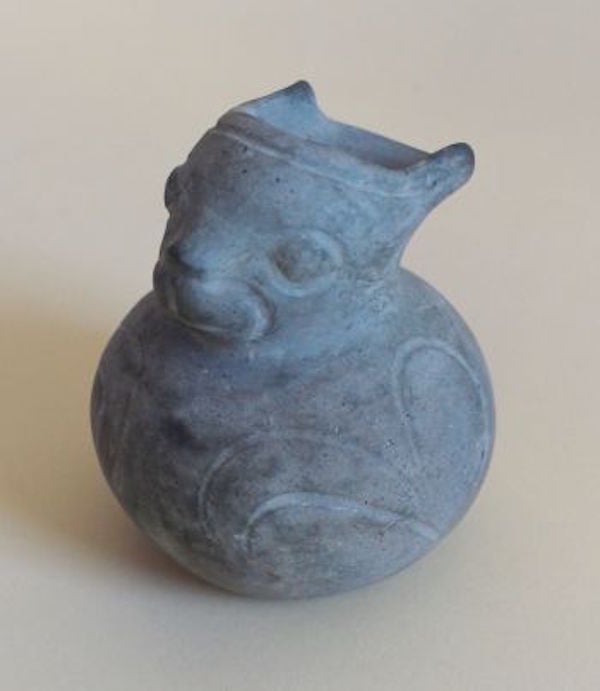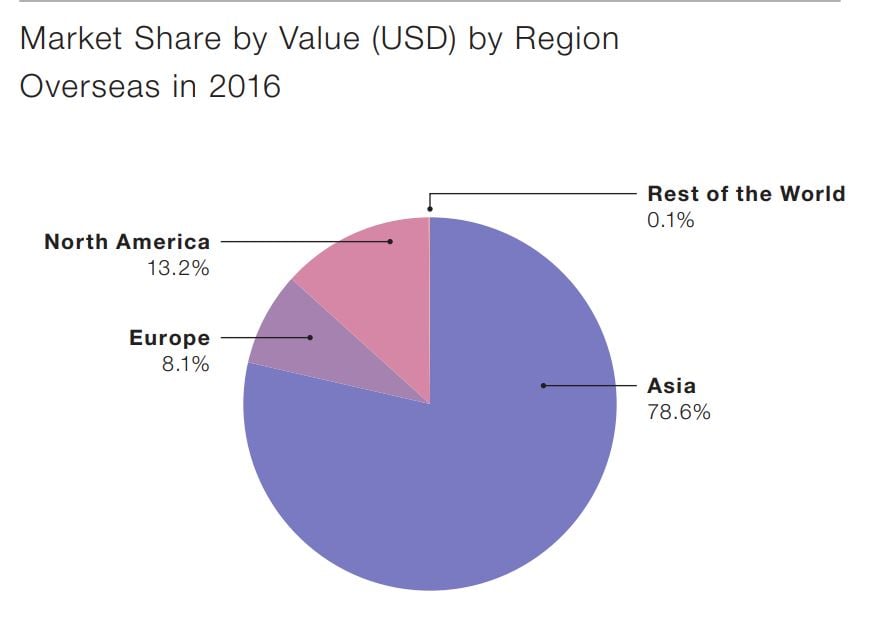Analysis
The Gray Market: Why ‘Mutual Trust’ Is an Art-World Fable When It Comes to Sales Agreements (and Other Insights)
This week, our columnist presents three stories that show that the devil is in the details.

Every Monday morning, artnet News brings you The Gray Market. The column decodes important stories from the previous week—and offers unparalleled insight into the inner workings of the art industry in the process.
In this edition, stories that hinged on the fine print—or lack thereof….
CONTRACT KILLERS: Last weekend, news broke that Simon de Pury—who I’m somehow only discovering now has frequently been described in the mainstream press as “the Mick Jagger of art auctions“—is suing former Sotheby’s exec Rudolf Staechelin for over $10 million in connection to the 2014 sale of Gauguin’s Nafea Faa Ipoipo (When Will You Marry?). Once thought to be the industry’s most expensive private-market transaction, court proceedings revealed that the masterpiece actually changed hands for roughly $90 million less than the nearly $300 million rumored to have been paid at the time by a Qatari collector.
But that’s not really the issue that deserves top billing, at least in my mind. Instead, that dubious honor goes to the fact that the legal fracas erupted because de Pury and Staechelin’s roles in the sale were governed by—in the words of de Pury’s attorney—”mutual trust” rather than a written contract. And in the most shocking turn of events since Charleton Heston discovered a fragmented Statue of Liberty on a beach ruled by super-apes, mutual trust apparently failed to keep matters crystal clear in a nine-figure transaction.
In other stunning news: Wood burns if you turn a flamethrower on it; flapping your arms really hard is not an adequate substitute for a parachute; and divorce papers make a lousy anniversary gift. WHO COULD HAVE SEEN THESE PLOT TWISTS COMING?
Full disclosure: I’m among those in the industry who have been advocating for the use of more and better contracts for years. But even if signing a written agreement is more repellent to you than standing by passively while a gang of centipedes crawls into your underwear drawer, just think for a moment about how insane this decision looks from an objective standpoint.
I’m pretty confident that, if even the most grizzled veterans in the art industry believed they were in line for $10 million based on the sale of a piece of real estate, a mega-yacht, or an ownership stake in a company, it would take a massive head injury to prevent them from lawyering up and getting the deal on paper. Make the asset in question a piece of art, though, and suddenly even “the Mick Jagger of art auctions” (sorry, couldn’t resist) sees no problem in gambling that same colossal payday on a dice-roll called “mutual trust” between alleged gentlemen.
Look, de Pury has been playing this game a lot longer and at a much higher level than I have. His attorney was also absolutely correct when he wrote that, in the art market, it’s not at all “unusual to find some types of contract made orally.” Even at enormously high dollar values, people in this industry have been doing things in a “gentlemanly manner” rather than a formally agreed one for generations.
But past precedent is not a legitimate argument for continuing a retrograde policy. We didn’t use to anesthetize people before surgery, either, but guess what? The medical community realized there was a better way, and everyone involved benefited. In my view, whether the amount at stake is $100 or $10 million, there’s no excuse for the art industry to refuse to evolve in kind. [The New York Times]

An artifact from Oaxaca in the Mexican Museum’s permanent collection. Courtesy Mexican Museum, San Francisco
REVERSE PSYCHOLOGY: On Thursday, a report commissioned by the board of San Francisco’s Mexican Museum determined that only 83 of 2,000 objects in the pre-Hispanic/pre-Columbian portion of its collection were certifiably “museum-quality.” The other 1,917 such pieces were downgraded to “decorative” status, meaning that either they were forgeries or could not be sufficiently authenticated to the standards necessary for “display in a national museum.”
In fairness, the Mexican has only been expected to meet these lofty standards relatively recently. The Smithsonian agreed to designate the institution an affiliate in 2012, with one stipulation of the pact being that the Mexican would conduct a full review of the origins of its 16,000-piece collection. Scrutiny will now turn to its remaining 14,000 objects from other periods, with museum officials on both sides no doubt crossing their fingers, toes, and other jointed appendages in hope for more positive results.
Although many, if not most, reactions I’ve seen to this news understandably focus on what Sam Whiting called the “astonishingly low” percentage of museum-quality artifacts in the Mexican’s pre-Hispanic collection, however, I wonder if that line of thinking sails wide of a larger, thornier, more systemic issue.
In spring 2015, Cal Berkeley public-policy professor Michael O’Hare contended that “any top-rank [art] museum exhibits no more than a twentieth of its collection” at any given time. And while condition concerns and lack of sufficient gallery space certainly contribute, the phenomenon largely owes to surplus and standards.
For example, if one institution owns 41 Monets, it would be counterproductive to show more than, say, 27 of them at once, as the Met did at the time of O’Hare’s writing. And this is especially true if said institution is less than 100 percent sure about either the credibility or the relative quality of some of those works. Logic dictates that it’s better for a world-class museum to keep its questionable holdings in storage than risk blemishing its reputation by installing them in the galleries.
Yet this means that nineteen-twentieths, or about 95 percent, of major-museum holdings are effectively useless to the public at any given moment. Which is particularly absurd when you consider that the public’s tax dollars subsidize those same museums’ operations. In practice, then, we are mostly paying the best institutions to withhold art from us, either because they have too much of it, or because, by definition, much of what they own cannot qualify as the best of its kind available.
Whiting reports that the Mexican’s 1,917 newly “decorative” objects—about 96 percent of its pre-Hispanic holdings, incidentally—”will probably be given to schools or smaller museums.” This policy basically acknowledges that sub-Smithsonian-level pieces can still bring value to viewers, and that it’s therefore better to redistribute them to lower-stakes environments than lock them away in a vault or destroy them like hard drives stocked with incriminating evidence.
If we want the arts to have a bigger, more meaningful presence in the culture, then, maybe it’s time for major museums to ask how much good could come of their own overstuffed storage racks if they initiated a similar redistribution through loans or gifts—even without a contractual obligation spurring them on. [San Francisco Chronicle]

A Hobby Lobby store in Stow, Ohio.
BIBLE BANGED: Finally this week, karma snapped back on American arts-and-crafts chain Hobby Lobby, which lived up to an alternate interpretation of its name when its evangelical owners prevailed in a 2014 Supreme Court decision ruling that employers with religious objections could deny birth control to their Obamacare-subscribing staffers. This Wednesday, the company agreed to settle a civil case brought against it by the US Department of Justice. The offense? A $1.6 million purchase of over 5,500 artifacts likely looted from Iraq—and largely slated for inclusion in Hobby Lobby’s forthcoming Museum of the Bible in Washington, D.C.
As my colleague Eileen Kinsella reported on Wednesday, the DOJ settlement will see Hobby Lobby “forfeit the artifacts named in the complaint, roughly 144 cylinder seals, and an additional sum of $3 million to resolve the civil action. It is unclear if any further civil or criminal charges are pending,” although art-law specialist Nicholas M. O’Donnell argued that the settlement would not have gone down like this without assurances that Hobby Lobby is indeed in the clear.
Let’s set aside the irony of an evangelical Christian group’s violation of the whole “Thou shalt not steal” thing. Let’s even set aside the pitch-dark comedy of the same group probably funding ISIS to the tune of seven figures, given that the jihadist collective’s black flag has been planted dead-center in the black market for antiquities for years.
Instead, let’s focus on Hobby Lobby’s completely predictable defense, embedded in a statement on its website: “The Company was new to the world of acquiring these items, and did not fully appreciate the complexities of the acquisitions process.” In other words, the art-and-antiquities trade is weird, and who could blame us for making mistakes? (Never mind that, you know, the DOJ claims that Hobby Lobby repeatedly ignored the advice of the professional consultants it had hired to advise the company on exactly this process…)
The problem with this defense is that it utterly ignores the one way in which the art-and-antiquities market works EXACTLY like every other market: the relationship between price and risk.
As I wrote back in 2014 about the sale of Leonardo’s “rediscovered” Salvator Mundi, the more questions there are about an acquisition’s past—and thus, the higher the probability that what’s changing hands is not as advertised—the heftier the discount a buyer can secure. And the rule rang true again in this case, since, despite the dealer’s insistence that Hobby Lobby’s cache of works “could be appraised at $11.8 million,” the company managed to negotiate the price tag from an already-bargain-basement $2 million to an even-lower $1.6 million.
Here’s a tip any successful businessman should know: When a seller NOT under visible duress from the three D’s (death, debt, and divorce) says, “Hey, I was already going to give you this stuff at about 17 percent of its actual value, but why don’t I knock another 20 percent off cause I’m a nice guy?” something is seriously awry. And at that point, it’s time to adapt the same logic used by comedian Dov Davidoff [NSFW] when a stranger in a drugstore aisle asked him whether he should buy 2-ply condoms: If you suspect an extraordinary level of protection is in order, maybe it’s time to just opt out of the whole deal. [artnet News]
That’s all for this edition. Til next time, remember: The details are important, but the big picture still usually matters way more.
Follow artnet News on Facebook.
SHARE





